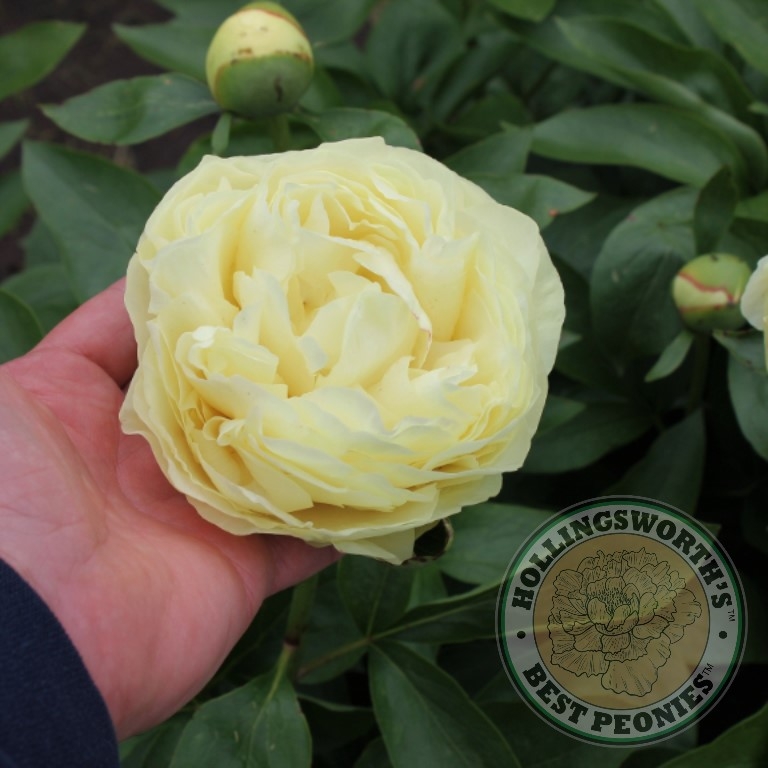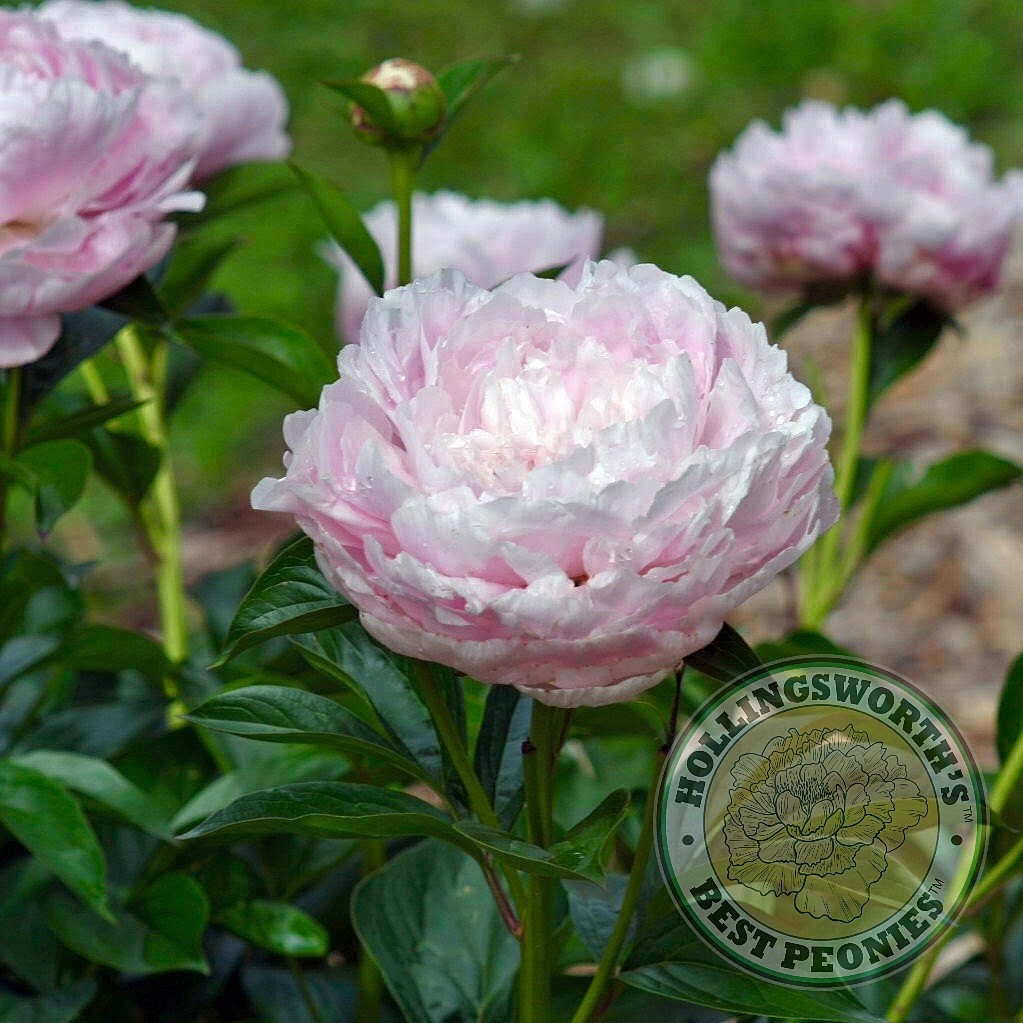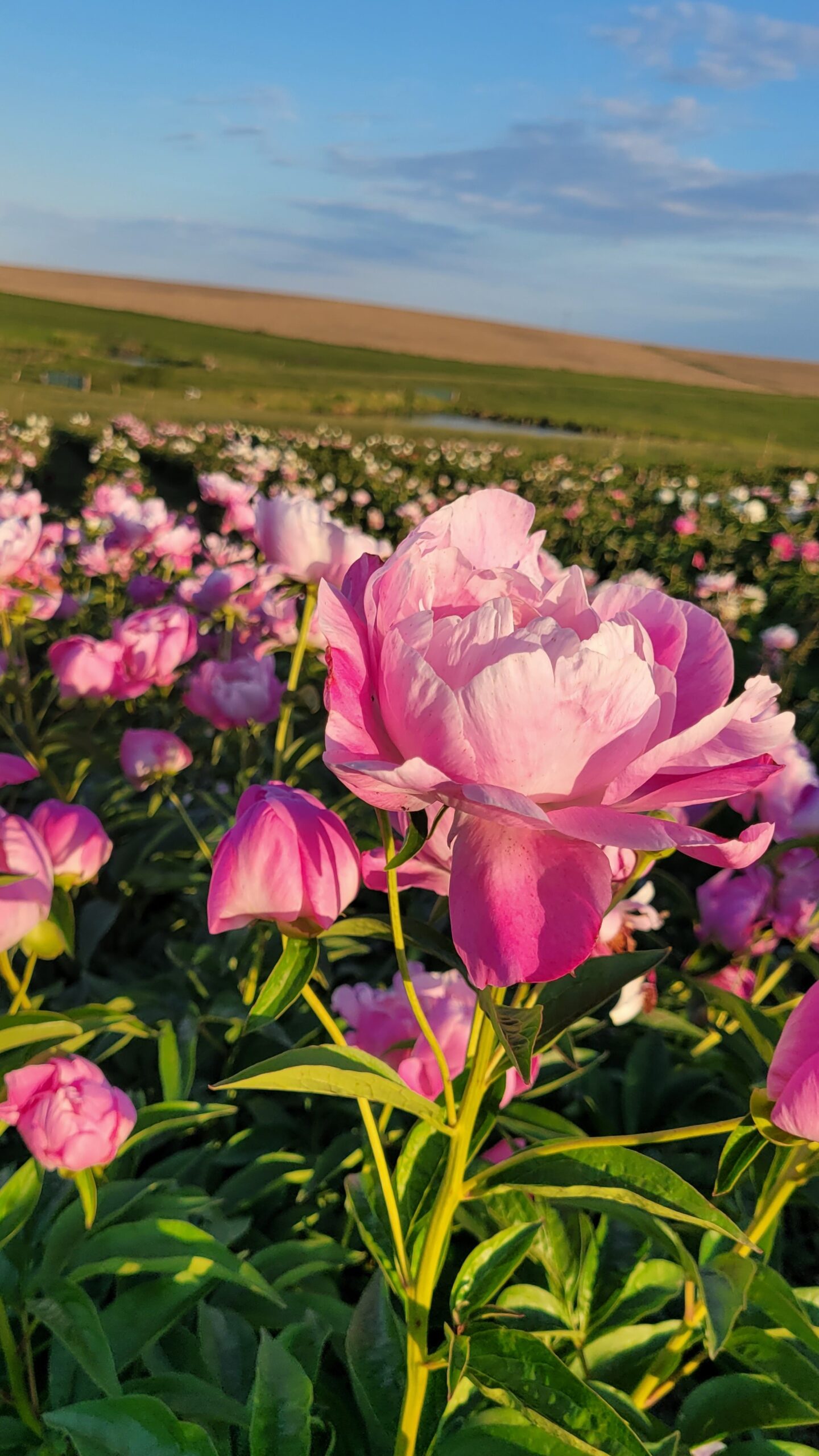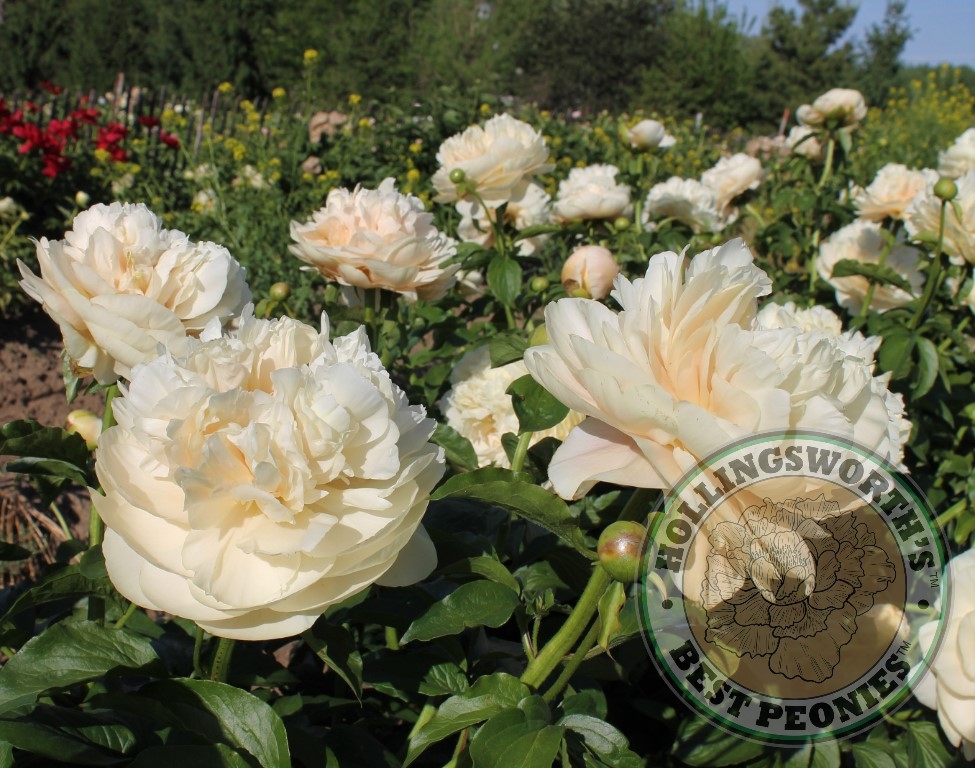Your cart is currently empty!
About Peonies

ABOUT PEONIES & THEIR GROWING REQUIREMENTS
By Juergen Steininger, June 2023
Peonies are long-lived, durable perennials that may grace your garden for many decades to come. Bush peonies are herbaceous plants with foliage and stems that die back to the ground after the growing season in the fall and winter. The following spring, herbaceous peonies resprout from below ground parts which are the crown and tuberous roots. Therefore, peonies are not “bulbs”. The growing, processing, and storing of these tuberous roots require an entirely different approach. Like trees and shrubs, herbaceous peonies need time to establish after planting and are relatively slow to increase. Usually, it takes several years for a newly planted peony to grow into a large clump. Likewise, peonies should be planted in the fall and are perhaps for this reason mislabeled as bulbs.
Autumn planting gives the plant enough time to grow fresh roots in their new location before the next growing season. Peony development is driven by temperature. Root growth occurs during the fall and any time in the winter when the ground is not frozen. In the spring, when temperatures increase, peonies switch to growing stems, foliage, and flowers. If this occurs without a sufficient root system supporting the new stems and foliage, the plant gets stressed, stunted, or dies. If planted at the right time and in a suitable location, peonies are dependable, tough plants and quite uncomplicated to care for. The following are some guidelines that might help you in growing your very own peonies:


FERTILE SOIL – Amend the soil of your new peony bed with compost and prepare the bed several months before planting. Fresh compost, especially if containing manure can be too “hot” for the peony roots.
AMPLE MOISTURE – While established peonies are quite drought tolerant, young plants require ample moisture. Choose a location with good, percolating soil. Avoid overwatering and areas prone to standing water. Excess water may lead to root rot and may kill a peony quite quickly.
PROPER PLANTING TIME – Peonies grow new stems, foliage, and flowers in the spring and should not be handled during this time. For the best results adhere to the natural progression, the growing cycle of peonies and planting them dormant in the fall. We supply freshly harvested, quality roots “peony starts” and deliver in autumn, at the right time for planting peonies.
TOUGH LOVE – Use fertilizer sparingly, especially in the first couple of years after planting to promote root growth. Lush growing conditions such as excessive fertilizing will yield lots of foliage on large plants with weak roots. These plants will produce few or no flowers. Exercise prudence and moderation when growing peonies, do not pamper and spoil your plants. They are fine with basic care.
MIND YOUR SELECTION – Select your new peony carefully based on its best use. Cut flower varieties (cutters) require mechanical support and make great additions to a cut flower garden but may not be a good choice for the landscape. If you are planting a flower bed or a mixed border, choose from the Best Landscaper peonies. On the contrary, Best Landscaper Peonies may not yield stems suitable for cutting and may not be a good choice for the cut flower garden.
PROPER CLIMATE – Peonies grow in USDA Climate Zone 3 through 7. Please refer to the USDA Plant Hardiness Zone for each variety. Some varieties may grow in Zone 2 and Zone 8, which are marginal to peonies. In the U.S., Zone 2 includes some regions of Alaska and Zone 8 includes states such as the Carolinas, Georgia, Alabama, Mississippi, Louisiana, and much of Texas. Ask locally to find out which variety may work for you. Peonies are not expected to grow in USDA Zone 9, such as Florida and the southern part of Texas, or along the Gulf Coast or southern California.
COMPANIONS – Perennials that do well in Missouri along with peonies are asters, yarrows, daisies, day lilies, cone flowers, phlox, hollyhocks, irises, rudbeckias, to name just a few. As a rule of thumb, they along with peonies are all sun loving plants and good choices for the sunny border. Be mindful of providing ample space for your peonies. Some of these perennials are quite vigorous, aggressive growers and they may smother your peonies quickly, if planted too close.
ANTAGONISTS – Peonies should not be grown with the following plants: bugloss, bleeding hearts, ferns, Hosta, foxglove, coral bells, Lenten rose, astilbe. All of these are popular perennials that require shade and flourish in an environment unsuitable for peonies.


While ornamental or common peonies are not native to America, they are non-invasive. They do not spread easily and do not out-compete our native flora. They enrich our gardens and provide food for many beneficial insects including ants. By far, most ant species are considered beneficial, a mighty army of janitors that keep our gardens and outdoors clean and free from organic waste. They are an integral part of the ecosystem and are an important part of a healthy garden. Ants are not needed for peonies to open their flowers. This remains a persistent and unfortunate myth. They are merely attracted to the sap, which peonies produce in abundance when in bud stage and while in flower. This sap is rich in sugar and apparently irresistible to ants. However, some species of ants can become pests when finding their way into your home.
If ants are a concern, then plant your peonies some distance from your home. For those of you who want to cut stems for flower arrangements, you may try the following. Cut your stems and place them into a sealable plastic bag, dry, no water is needed. Store the bags in a refrigerator for a day and take them outside. Shake the flowers well and all the ants will fall off onto the ground. Ants are cold-blooded and will go quiescent in the cold and will not be able to cling to the flowers. The cold will not kill the ants, so shake the stems some distance away from the house. Recut your stems, place them into a vase with water and presto, ant free peonies.
